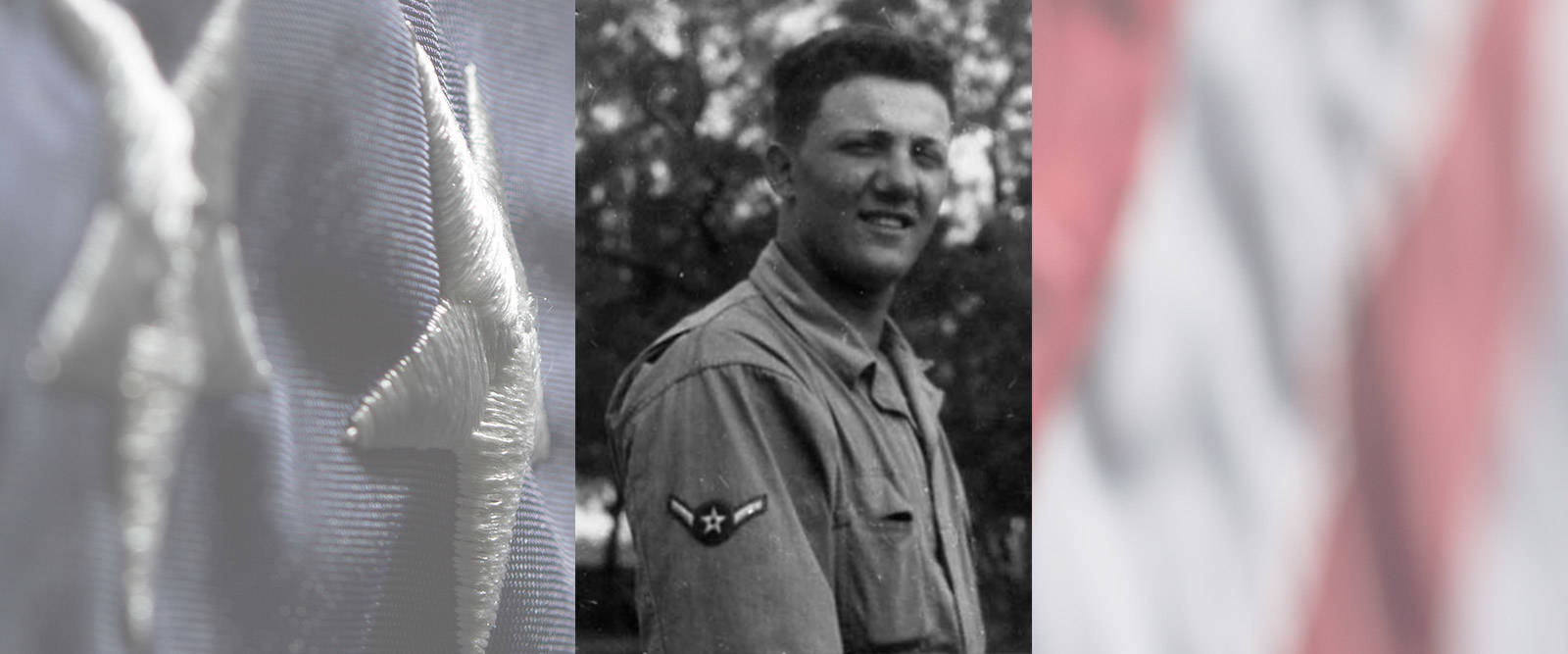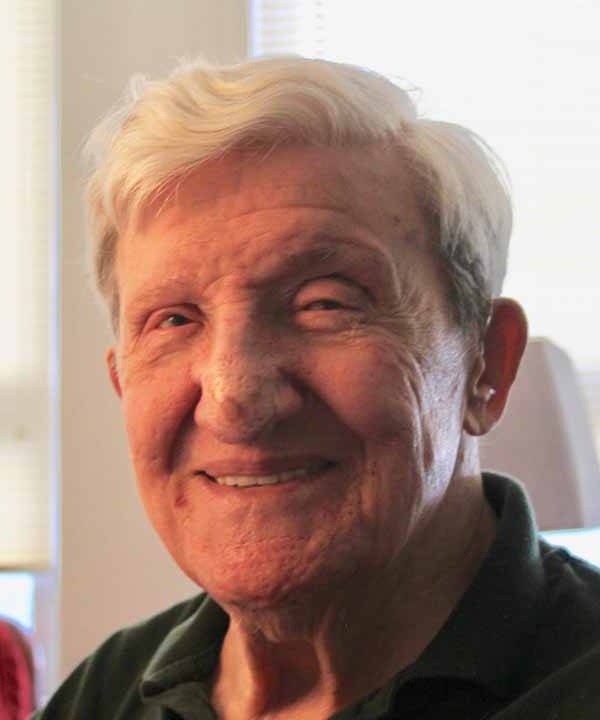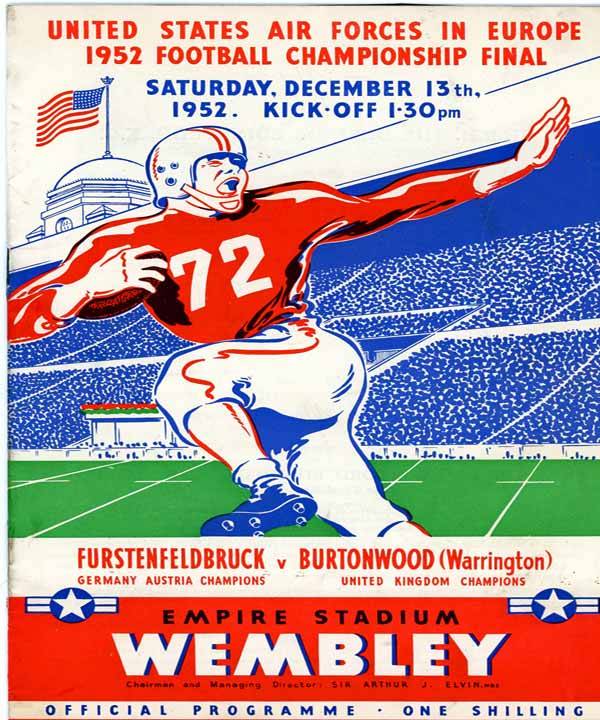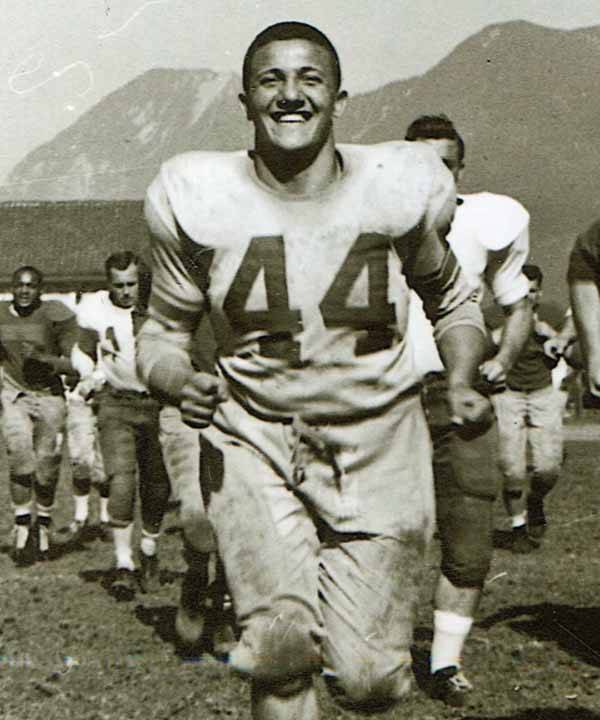U.S. Air Force Korean War Northlake, IL Flight date: 08/08/18
By David Adams, Honor Flight Chicago Veteran Interviews Volunteer
Mario Cortina grew up on Chicago’s West Side, graduating from St. Ignatius High School in 1949 where he played football in the Chicago Catholic League. His football prowess would pay off handsomely in the Service. From age 14 until 19, while in school and during summers, he worked for an electrical construction company installing street lights and stop-and-go lights all over Chicago. After high school Mario attended DePaul University until March 1951 when he enlisted in the U.S. Air Force. As he tells it, he would have been drafted into the Army, but he and some buddies had signed up for the Air Force a month earlier. Their other choices, Navy and Marines, were not recruiting that Spring in Chicago.
Mario completed Basic Training at Lackland AFB, TX and electronic fire control systems school at Lowry AFB, CO. At Lowry, he learned the Lockheed F-80 “Shooting Star” fighter gunsight, the K19. Being fully trained and qualified by early July 1951 he spent some time at Camp Kilmer, NJ waiting for orders to ship overseas. Eventually, around Labor Day, he boarded a troop ship for an excruciating eight-day voyage to Bremerhaven, Germany. He arrived at his new assignment with the 36th Fighter-Bomber Wing at Fürstenfeldbruck Air Base, Germany in mid-September. The base had been a Luftwaffe flying training base during World War II. He recalls the airmen’s quarters were in the main building which stretched one kilometer in length. His room had marble flooring. Nothing had been too good for Field Marshall Herman Göring!
Before getting to his barracks he noticed the base football team practicing in the quadrangle. He asked the squadron adjutant, “Is it too late to play football?” The team had already played two games but had eleven more in the season. When the coach learned he played for St. Ignatius in the Chicago Catholic League, he told him “not too late!” He joined the team as a defensive tackle and played the very next Saturday.
Mario was assigned to the 23rd Fighter-Bomber Squadron. All three squadrons at “Fursty” flew the Republic F-84E “Thunderjet” which had replaced the F-80 in the Wing. He maintained the gun sights of his squadron’s fighters. Mario was a scrounger and from time-to-time used his unique skill to enhance the capability of the 23rd weapons systems group. He cannibalized damaged F-84s to build a mockup for training purposes. His contribution to the air defense mission of the squadron paid off when the 36th FBW deployed to Wheelus Air Base, Libya for a month twice a year. There at Wheelus the pilots used the gunnery ranges including the air-to-air gunnery range. Mario recalls that it was essential that the gunsight properly “track” so the pilot could put his bullets on target. Not only was he in charge of the 13 fighters but also the refueling operation. He remembers “instructing” the Libyan workers to have the larger men haul the hose and the smaller men run the truck gages and the like. Mario could be very persuasive, he says. While at Wheelus, Mario was asked by his squadron commander, “the old man,” to train first the Greek Air Force technicians and then the Italians. Both Air Forces were being equipped with the F-84. Mario, who spoke some Italian, did an outstanding job. He also remembers that the 23rd formed the “Skyblazers” aerial demonstration team which was the forerunner of today’s “Thunderbirds.”
Mario recalls that it was not “all work and no play” with the fighter squadrons. One Sunday morning he received a phone call from Wing Commander Colonel Scott who asked him to come down to the flight line. “Ok,” he said. Once he arrived Scott gave him a parachute and told him to hop into the backseat of a T-33 trainer, a variant of the F-80. Mario asked, “Where are we going?” Scott replied, “For coffee.” Continuing the exchange Mario said, “There’s coffee here in the O Club.” Scott said “We are flying to Vienna.” And they did. Mario remembers with pride that a 23rd fighter pilot, Jim Hartinger, played quarterback on the Fursty base football team, the “Eagles,” and later retired a four-star general. In 1952 the Fursty Eagles with Hartinger at the helm claimed the USAF Germany Austria football championship after an undefeated season and played for the USAFE championship against the United Kingdom champions Burtonwood “Bullets.” The game was in London’s Wembley Stadium before 30,000 fans on Dec. 13, 1952 and was the first American football game ever played there. The Fursty Eagles prevailed 26-7. A British newspaper report remarked, “The Yanks may have something jolly good there.”
Fürstenfeldbruck Air Base is located just west of Munich and fairly close to the village of Dachau. Mario and many of his squadron mates made the short trip there to see the remnants of the concentration camp, now a memorial, which had been liberated just six years earlier. He has indelible memories of Dachau. Mario made many other trips in Europe during his three-year tour. He recalls visiting Spain and Italy, especially the province from which his family came, Frosinone, between Rome and Naples. The 36th moved to Bitburg Air Base west of the Rhine in January 1953. The 36th obtained the North American F-86F “Sabre” in August 1953, turning in its F-84s. Mario spent nearly three years with the 23rd at Fürstenfeldbruckand Bitburg returning to the States in May 1954 due to a family medical emergency. He wrangled an assignment to the Air Defense Command at O’Hare Field and was discharged in January 1955 with the rank of Staff Sergeant. Overall, Mario credits the Air Force with providing him a “great education” and the chance to see much of the world.
Mario finished his college education at Illinois Institute of Technology and received a master’s degree from Dominican University. He worked for 40 years as purchasing agent for a variety of Chicago-based companies including Admiral Corporation, SK Tools and Amphenol. In his spare time he coached Pop Warner youth football and was an adult leader of a Cub Scout Webelos den. One day after helping out at his brother’s business he changed into “civvies” and started for home. Almost at once he “saw her walking down the street” headed for a bus. He had to meet her, and as he puts it, “The rest is history.” He married Diana Blancato in 1957, and they celebrated 59 years of marriage in 2016. He learned that Diana also held degrees from Dominican including a master’s. Now a widower, Mario enjoys his four children and three grandchildren and meeting other veterans at his assisted living community.
Mario, welcome home and thank you for your faithful service. Enjoy your special day in Washington, D.C. for you have certainly earned it!






